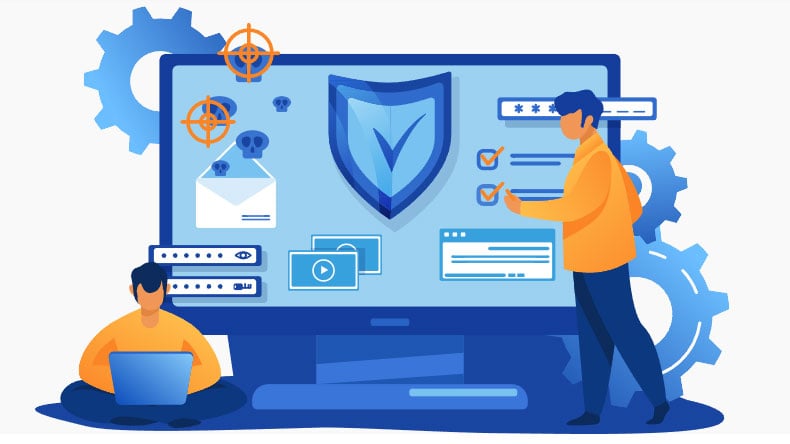
Protecting Your Data: Essential Strategies for Web Application Security
In an age where cyberattacks cost businesses an average of $4.35 million per breach (IBM, 2023) and regulatory fines soar, securing web applications is not just a technical necessity—it’s a business imperative.

This guide explores critical threats, actionable defenses, and cutting-edge tools to protect your digital assets.
Why Web Application Security is Non-Negotiable
Data Breach Fallout:
• 58% of breaches target web apps (Verizon DBIR 2023).
• Example: The 2023 MOVEit breach exposed 60M+ records via a zero-day vulnerability.
Regulatory Pressure:
• GDPR fines exceed €1.6 billion since 2018; upcoming regulations like the EU Cyber Resilience Act intensify compliance demands.
Brand Erosion:
• 80% of consumers avoid companies post-breach (Ponemon Institute).
Top 2023-2024 Web App Threats
SQL Injection (SQLi)
• Risk: Attackers manipulate databases to steal data.
• Case: 2022 Optus breach exposed 9.7M customer records via an unpatched API.
• Defense: Use parameterized queries, Web Application Firewalls (WAFs), and tools like Acunetix.
Cross-Site Scripting (XSS)
• Risk: Malicious scripts compromise user sessions.
• Case: 2023 PayPal phishing campaign used stored XSS to hijack accounts.
• Defense: Implement Content Security Policy (CSP) and sanitize inputs with DOMPurify.
Insecure APIs
• Risk: 42% of organizations report API security incidents (Salt Security).
• Case: Twitter’s 2023 API exploit allowed data scraping of 200M+ profiles.
• Defense: Enforce OAuth 2.0, rate limiting, and test APIs via Postman or Swagger.
AI-Driven Attacks
• Risk: Hackers use generative AI to craft polymorphic malware.
• Case: ChatGPT-generated phishing emails bypass traditional filters.
• Defense: Deploy AI-powered tools like Darktrace for anomaly detection.
Proactive Defense Strategies
Shift-Left Security
• SAST/DAST: Integrate Checkmarx (static analysis) and OWASP ZAP (dynamic testing) into CI/CD pipelines.
• IaC Scans: Use Snyk to detect misconfigurations in Terraform or Kubernetes manifests.
Zero Trust Architecture
• Microsegmentation: Isolate app tiers (frontend, backend, DB) to contain breaches.
• JWT Tokens: Replace session cookies with stateless tokens for API security.
Automate & Monitor
• WAFs: Deploy Cloudflare or AWS WAF to block OWASP Top 10 threats.
• SIEM Tools: Use Splunk or Microsoft Sentinel for real-time threat hunting.
Compliance Alignment
• GDPR/CCPA: Encrypt PII with AES-256 and audit data flows.
• PCI-DSS: Conduct quarterly vulnerability scans and restrict access to payment systems.
Must-Have Security Tools
Burp Suite
Purpose: Penetration Testing & Vulnerability Scanning
Key Features:
• Automatically detects OWASP Top 10 vulnerabilities (SQLi, XSS, etc.)
• Enables manual exploit testing with granular control
• Generates actionable remediation reports for developers
Snyk
Purpose: Dependency & Infrastructure-as-Code (IaC) Security
Key Features:
• Scans open-source libraries and container images in real time
• Identifies misconfigurations in Terraform/Kubernetes manifests
• Integrates with CI/CD pipelines (GitHub Actions, Jenkins)
Qualys
Purpose: Continuous Monitoring & Compliance Assurance
Key Features:
• Cloud workload protection across AWS/Azure/GCP
• Vulnerability prioritization using CVSS scores
• Automated GDPR/PCI-DSS audit report generation
Aqua Security
Purpose: Container & Kubernetes Protection
Key Features:
• Runtime threat detection for containerized environments
• Pre-deployment vulnerability scanning for Docker images
• Blocks malicious containers using behavioral analysis
HackerOne
Purpose: Crowdsourced Vulnerability Management
Key Features:
• Connects organizations with 1M+ ethical hackers
• Manages bug bounty programs and vulnerability validation
• Reduces exploit exposure windows by 72% (HackerOne 2023 Report)
Future-Proofing Your Security
AI vs. AI:
Adopt tools like IBM Watson for Cybersecurity to counter AI-generated attacks.
Quantum Readiness:
Migrate to post-quantum cryptography (e.g., NIST’s CRYSTALS-Kyber).
SBOM Adoption:
Generate Software Bill of Materials (SBOMs) with Anchore to track third-party risks.
Turn Defense into Advantage
Robust web app security isn’t just about avoiding fines—it builds customer trust and operational resilience. By adopting proactive measures like AI-driven monitoring and zero trust, businesses can:
• Reduce breach likelihood by 60% (Forrester).
• Achieve 50% faster incident response.
Final Insight: As cyber threats evolve, so must your defenses. Start securing your web apps now—before attackers do the job for you.






